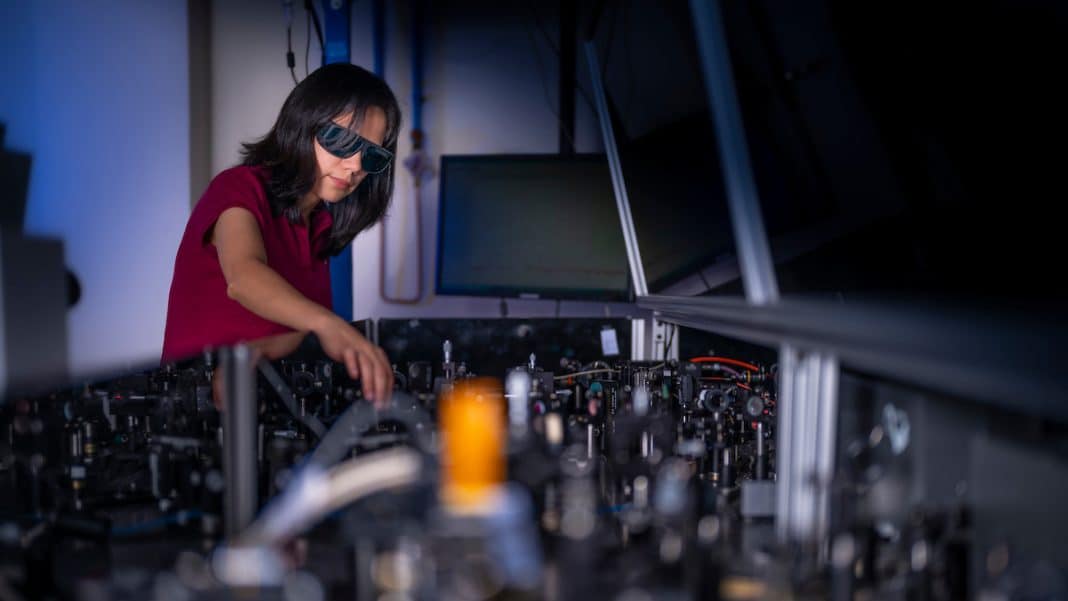Once just a fanciful trope used in spy movies and science fiction, researchers from the ANU have recently produced new technology that could make night-vision easily accessible via an ultra-compact thin film.
The new prototype tech, based on nanoscale crystals, could be used for defence as well as day-to-day uses, making it safer to drive or walk home after dark.
The first-of-its-kind thin film, described in a new article published in Advanced Photonics, is ultra-compact and one day could work on standard glasses.
The team also say the work of police and security guards – who regularly employ night vision – will be easier and safer, reducing chronic neck injuries from currently bulky night-vision devices.
“We have made the invisible visible,” lead researcher, ANU Postdoctoral Fellow Dr Rocio Camacho Morales said.
The technology works by transforming infrared light, normally invisible to the human eye, into images clearly visible to the human eye.
“We’ve made a very thin film, consisting of nanometre-scale crystals, hundreds of times thinner than a human hair, that can be directly applied to glasses and acts as a filter, allowing you to see in the darkness of the night.”
The technology is extremely lightweight, cheap and easy to mass produce, making them accessible to everyday users.
Currently, high-end infrared imaging tech requires cryogenic freezing to work and are costly to produce. This new tech works at room temperatures.
This first breakthrough is an initial proof-of-concept experiment, with researchers actively working to further advance the technology.
ANU Professor in Physics Dragomir Neshev said this application is a world first.
“This is the first time anywhere in the world that infrared light has been successfully transformed into visible images in an ultra-thin screen,” Professor Neshev said.
“It’s a really exciting development and one that we know will change the landscape for night vision forever.”
The new tech has been developed by an international team of researchers from TMOS, ANU, Nottingham Trent University, UNSW and European partners.
For more news:



